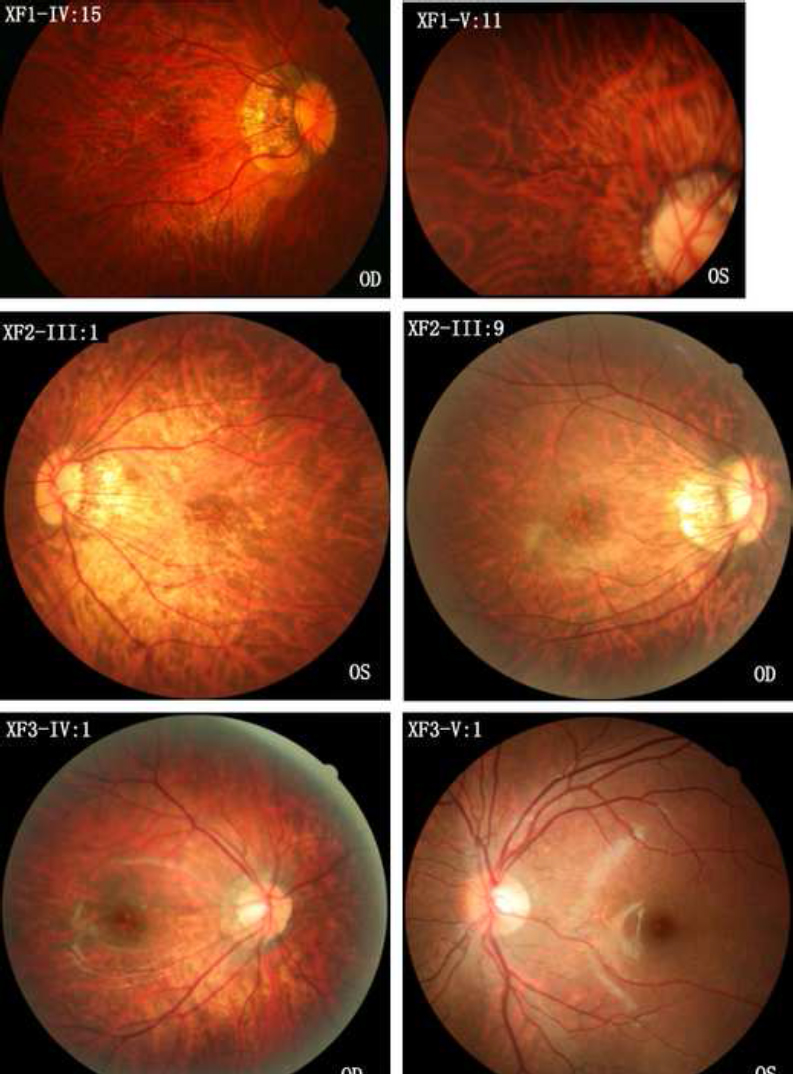Figure 4. Fundus photographs of female patients with eoHM and different heterozygous mutations in ARR3 and an unaffected male family member with a hemizygous mutation in ARR3. The top two photographs are from family members IV:15 and V:11 of family XF1, respectively. Both have the heterozygous c.893C>A
mutation in ARR3. The middle two photographs are from family members III:1 and III:9 of family XF2, respectively. Both have the heterozygous
c.298C>T mutation in ARR3. The lower two photographs are from family members IV:1 and V:1 of family XF3, respectively, in which the female patient
(IV:1) has the heterozygous c.239T>C mutation in ARR3 and has early onset high myopia (eoHM), but the male family member (V:1) has the hemizygous mutation in ARR3 without eoHM. All five female patients (XF1-IV:15, XF1-V:11, XF2-III:1, XF2-III:9, and XF3-IV:1) with heterozygous mutations
in ARR3 demonstrated a temporal crescent of the optic nerve head and tigroid appearance of the posterior retina. However, XF3-V:1
is a 6-year-old boy with a hemizygous mutation in ARR3 who did not have eoHM. OD: right eye. OS: left eye.

 Figure 4 of
Xiao, Mol Vis 2016; 22:1257-1266.
Figure 4 of
Xiao, Mol Vis 2016; 22:1257-1266.  Figure 4 of
Xiao, Mol Vis 2016; 22:1257-1266.
Figure 4 of
Xiao, Mol Vis 2016; 22:1257-1266. 